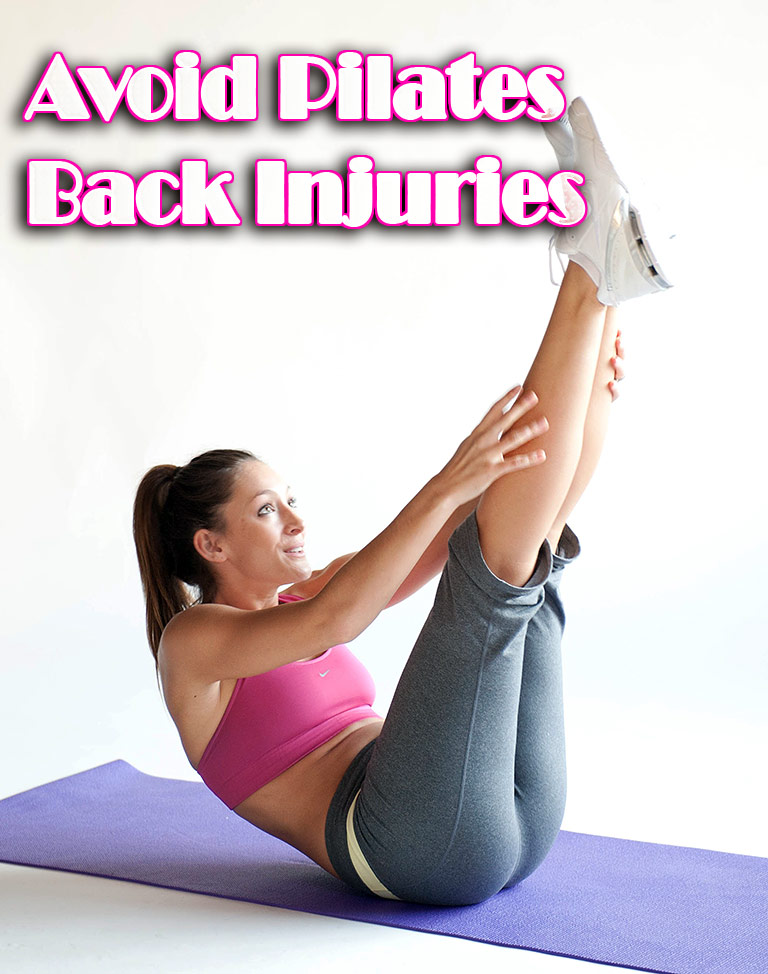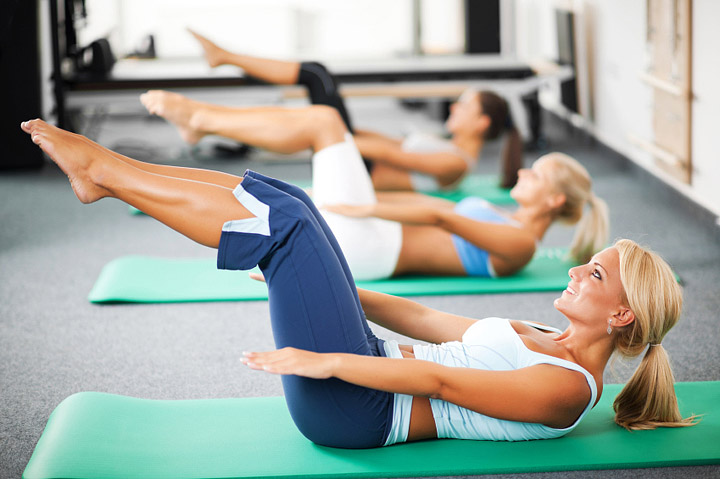
Because of the increasing popularity of Pilates, there seems to be more complaints of Pilates and back pain.
Why are there so many Pilates back injuries all of a sudden? There are many reasons for Pilates back injuries – some of which are due to overcrowded classes and inexperienced teachers. Because of the complexity and focus needed to execute the movements properly, if they are not cued just right and without proper warm-up, you could wind up hurting yourself.
There are many different hybrid types of Pilates classes popping up and people are joining them, thinking they are learning the classical movements. Pilates on the ball, Pilates with the bar and Yogilates are just a few that combine other forms of exercise that you may just not be ready for.

How can you avoid Pilates back injuries? Take a look at some of the most common Pilates exercises that may contribute to back pain.
- Imprinting the Spine: When you imprint the spine into your mat, this means you are pressing the spine or back into the mat.
This exercise can cause compression on the discs of the spine.Better Option: Neutral Spine (using the natural curvature of the spine) is the only place where the muscles can work safely and effectively to support the spine in all movements. - Roll-Up: Most people use momentum to do the roll-up.
This exercise can cause Pilates lower back injuries when done repetitively and with tight hip flexors and weak core muscles.Better Option: Use a mini ball at the lower back to help support the back as you roll into it only halfway down. - Swimming and Swan Dive: Lying on your stomach with arms and legs extended.
These exercises, when lifting the arms and legs, can cause the back to hyperextend and cause excessive disc compression.Better Option: Draw the abdominals up off the mat and extend one arm and opposite leg, keeping the head down on the mat. - Rolling: Rolling like a ball is supposed to be gentle and like a massaging action.
If you have Osteoporosis, this exercise can cause fractures of the spine if done too aggressively. Also, by throwing the head and not engaging the abdominal muscles, it can cause compression of the lower back as well as whiplash in the neck.Better Option: Practice just balancing on your tailbone – sitting up or lying down – hugging your knees and rocking gently back and forth without rolling up to a balance. - Leg Circles: Lying on your back with one leg at 90-degree angle and the other straight on the mat.
If you have tight hamstrings, keeping both legs straight, can pull excessively on the lower back and not allow you to effectively keep the tailbone down and use the abdominal muscles to stabilize the body.Better Option: Bend the leg you are circling so the spine can relax into its neutral position and then the torso is better able to stay anchored, making the exercise more effective.





Leave a Reply